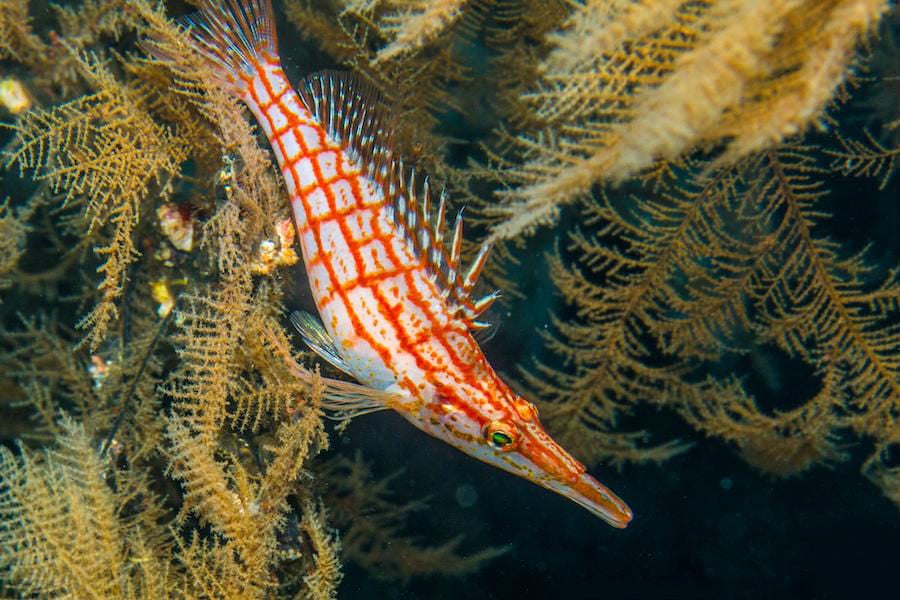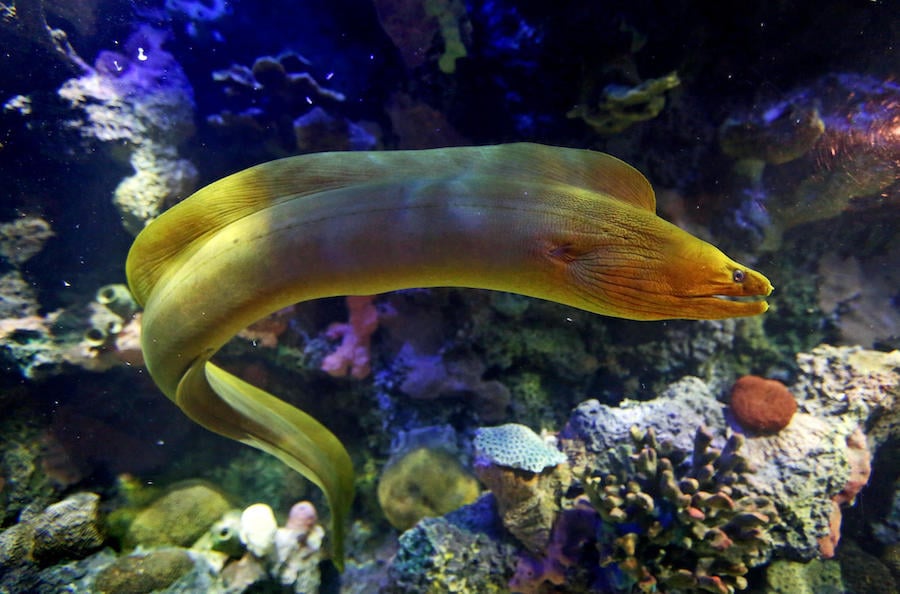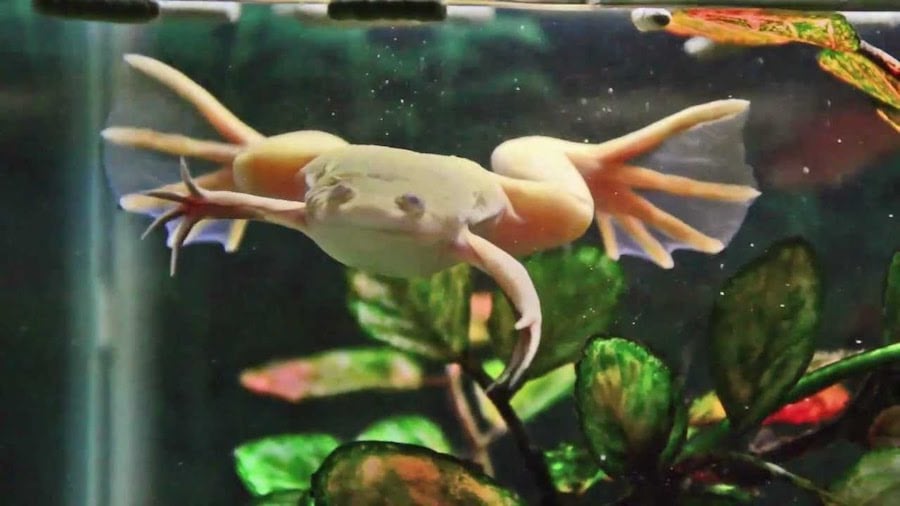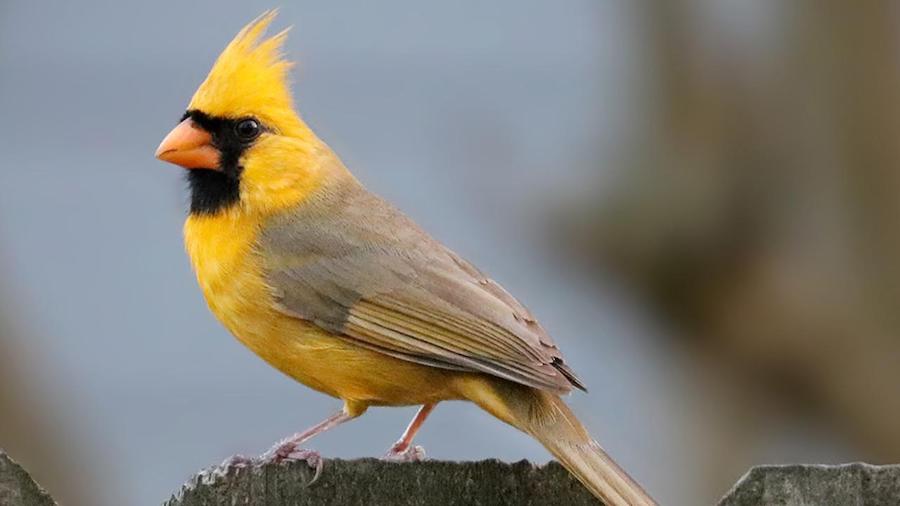Gender isn’t always binary. Mother Nature doesn’t make gender a choice between one and another. In fact, in the animal kingdom there are many creatures that walk the line between male and female, changing gender based on their environment, availability of partners, and other biological needs. Others, still, display characteristics of both male and female creatures of their species. Here are 11 animals that can change their gender!
Parrotfish
Parrotfish always travel in groups. These groups (as they are fish, they’re called “schools”) are always led by a dominant male, followed by many female parrotfish. However, these female parrotfish are actually not what they seem. They are, in fact, deemed “secondary males”. This means they display all the characteristics of a female fish (including a reproductive system), but if the dominant male of the school passes away or is incapable to perform their role as a leader, one of these “secondary males” will change their gender and become the primary male!

Clownfish
They’re bright orange, they’re cute, and they’re famous thanks to “Finding Nemo” and “Finding Dory”. Similarly to the Parrotfish, Clownfish can change their gender if the leaders of their group are no longer capable to perform their duties. Schools of clownfish have a large male and an even larger female. The rest of the fish in the school are smaller, immature males. If the female dies, the large male will become female, and the largest “immature male” will become the mature male of the group of fish. This means that a single clownfish can (potentially) change their gender twice over the span of their lifetime.

Banana slugs
It’s bright yellow. It can grow up to 10 inches long. Of course it’s name is Banana Slug! These wormlike mollusks are what is called “simultaneous hermaphrodites” which means that unlike Clownfish (which are sequential hermaphrodites), they display both male and female traits (and have male and female organs) at the same time.
Although they are capable of self-fertilization, most banana slugs usually mate with a partner. When they mate, they both produce sperm and eggs. At the end of their mating, they both have fertilized eggs that they usually deposit under leaves or logs. One mating process – double the offspring!

Hawkfish
These vibrantly colored fish live in extremely large groups. And, just like clownfish and parrotfish, they can change their gender when the circumstances call for it. However, if in parrotfish and clownfish schools this usually happens because the male or female leader of the group dies, when it comes to Hawkfish, the gender switching happens when the school gets too big.
Schools of hawkfish have one male and many females. If one male has too many females in their group, the largest will become male, and the single school of hawkfish will split into two equal, but smaller schools of hawkfish.
Furthermore, the male hawkfish can revert back to being female if a larger male contests them or if the female population dwindles and additional females are needed for survival.

Moray eels
Moray eels are sequential hermaphrodites, just like clownfish. And, just as it is with clownfish, it is males that become females. However, unlike clownfish, all Moray eels make the switch in their lifetime during a very colorful and remarkable process. After the switch, moray eels live out the rest of their life as an egg-laying female eel.
Unlike regular moray eels, Zebra and Dragon moray eels switch from female-to-male instead of male-to-female.

Butterflies
Unlike all the previous animals on the list (save the moray eel), many butterflies experience and display hermaphroditism. Some butterflies display both male and female colorings on their bodies and wings. This rare condition is called gynandromorphism, and can be caused by a genetic error during the early stages of the butterfly’s formation. Gynandromorphism can be found in many animals, but it is most noticeable and most astonishing when you can see it on the wings of a butterfly.

African Clawed Frog
Scientists and researchers have began observing spontaneous gender changes in the frogs in their labs. More recently, they began seeing the same thing happening in the wild. However, in both cases it did not seem like a natural process. A large number of male frogs are becoming female, developing functional reproductive organs. And the reason for this turned out to be a common and popular weed killer chemical – atrazine.
This chemical has now been banned in Europe. When it would get absorbed into the soil and then later carried to rivers, it would completely mess up the hormone levels in the bodies of these frogs. By suppressing testosterone and boosting estrogen the chemical managed to make many of these frogs turn from male to female.

Cardinals
Other than having an extremely rad name, cardinals can also display bilateral gynandromorphism. According to a study from the Western Illinois University, cardinals not only display gynandromorphism, but they also begin to behave differently. The study (conducted in 2008-2010) show that gynandromorph cardinals did not participate in mating rituals with other specimens from their species. However, they were fully accepted by other cardinals who did not display any gender-nonconforming traits.

Cuttlefish
Species from the same class as squids and octopi, cuttlefish don’t exactly change their gender, however they can change their coloring and camouflage as the other gender. This is commonly done during courting rituals (before mating) to avoid excessive rivalry from other males in the area. But the cleverness doesn’t stop there! Cuttlefish change their coloring the way a gynandromorph would — one side shows female coloring, while the other shows male coloring. A truly clever trick indeed! Very two-faced though. This can’t be the foundation of a healthy cuttlefish relationship.

Snakes
Copperheads, cottonmouths, and other female snakes are capable of giving virgin birth. This is called parthenogenesis, meaning the female can fertilize their own eggs in the event that they do not find a suitable male partner during mating season. While this does not (technically) classify as a gender reversal, it does mean that some female snakes can carry out the reproductive actions of both a male and female while not a hermaphrodite.

Green sea turtles
The eggs of green sea turtles seem to be temperature sensitive. The warmer the sand that the eggs are buried in, the higher the quantity of female turtles born from those eggs. For example, on the sandy beaches of Australia (where the ozone layer is thin and temperatures are dramatically higher), up to 99.8 of all hatched green sea turtle eggs hatch female turtles! Meanwhile, the same species laying eggs in cooler climates show a 65/25 female-to-male ratio of births. This can have a tremendous impact on global populations of green sea turtles, potentially causing a collapse and demise of the species.

